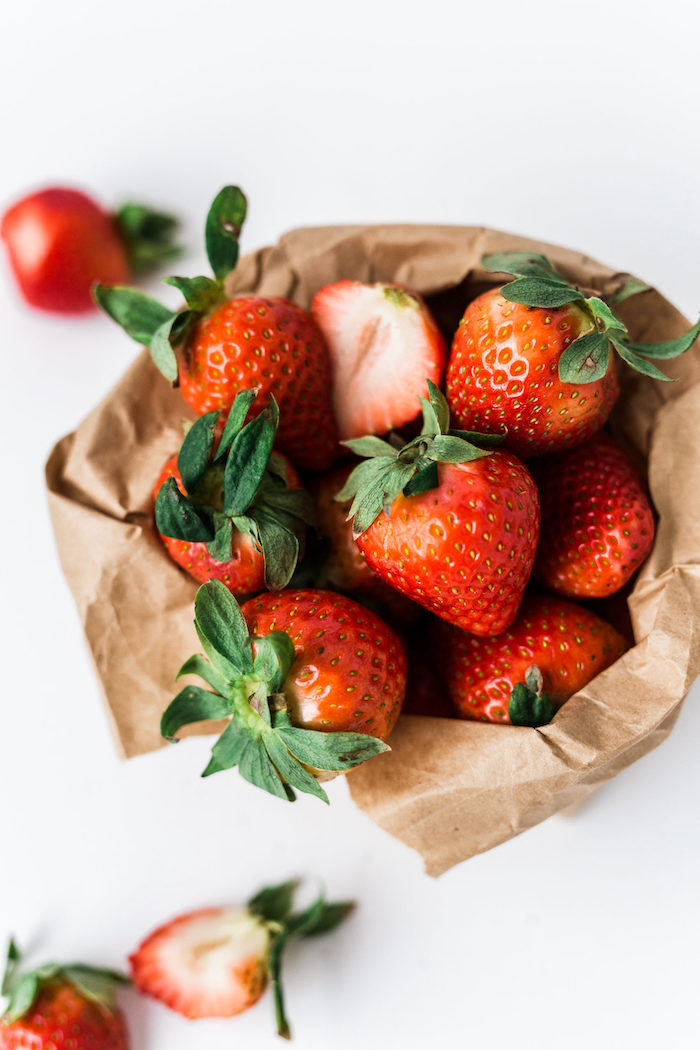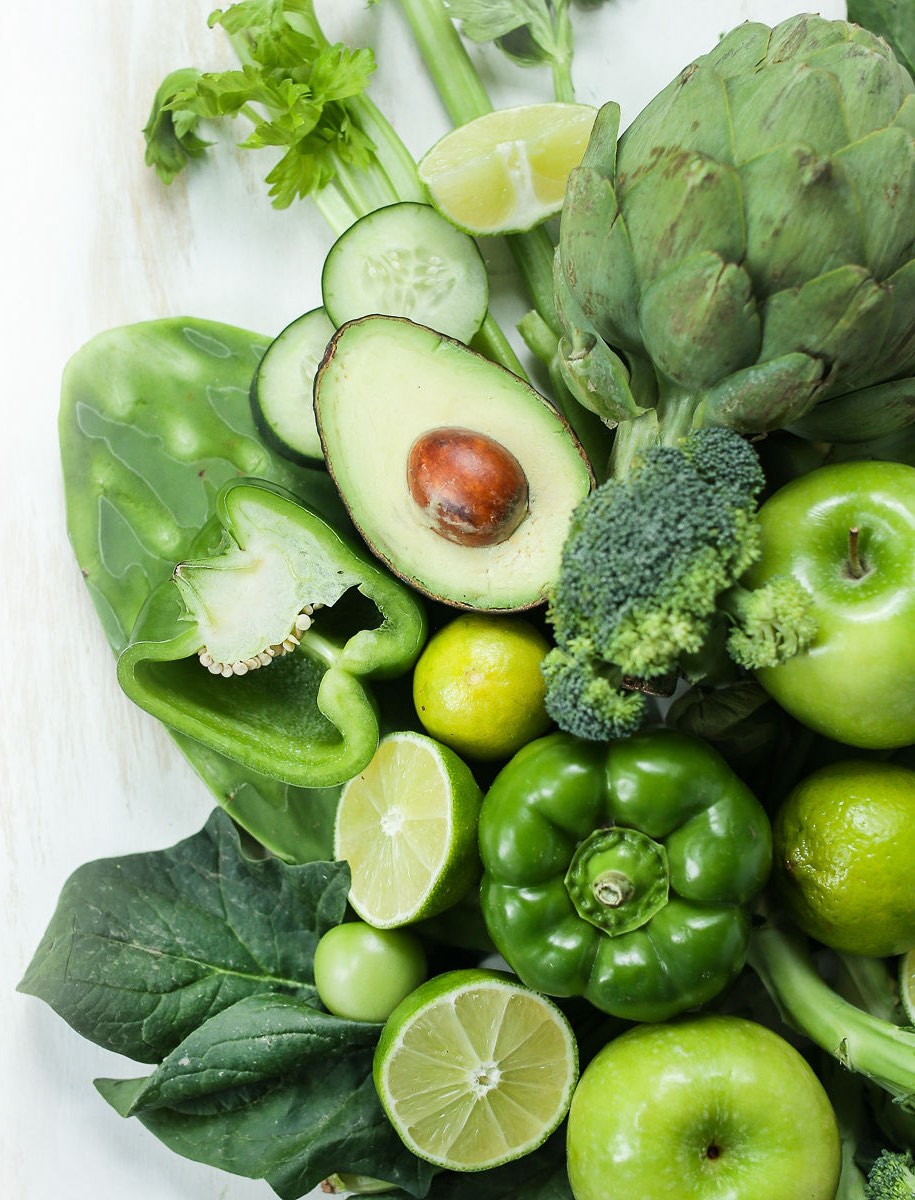
People often ask me if I buy everything organic, and I’ll be the first to admit—health coaches aren’t perfect!
While I strive to eat mostly organic and use organic ingredients when developing recipes, it’s not always practical. Plus, when it comes to fruits and vegetables, buying organic isn’t always necessary.
The key factor is how the food was grown. Many small farms use organic practices but haven’t gone through the expensive certification process. If you’re shopping at a farmer’s market, don’t hesitate to ask farmers about their growing practices. I’ll often buy produce from small farms—even if it’s on the Dirty Dozen—if they follow organic methods but aren’t certified yet.
When shopping at the grocery store, I rely on the Dirty Dozen and Clean 15 lists to help me decide which produce to buy organic.
- Dirty Dozen: These fruits and veggies are most likely to contain pesticide residues. If you want to reduce your exposure, opt for organic versions of these. The 2024 Dirty Dozen includes strawberries, spinach, kale, grapes, and peaches.
- Clean 15: On the other hand, the Clean 15 list includes produce that tends to have the least pesticide residues. You can feel more confident buying conventional versions of these. In 2024, the Clean 15 includes avocados, sweet corn, pineapples, onions, and cabbage.
By following these lists, you can make smarter choices about when to invest in organic produce. It’s all about balancing your budget, supporting small farms, and making health-conscious decisions.
You may have heard of the Dirty Dozen and Clean 15, but you might not know that the lists are updated each year.
Check out the full lists below, and save the handy images I made you to your phone for easy shopping. The list is typically updated once each year. (The Environmental Working Group (EWG) last updated its Shopper’s Guide to Pesticides in Produce on March 20, 2024. We’ll update this post if the lists change in 2025 when the report is released.)
The Environmental Working Group (EWG) is a non-profit, non-partisan organization dedicated to protecting human health and the environment. They research what’s in our tap water, the safety of our cosmetics, genetically modified organisms (GMO / GE), and the amounts of pesticides in and on our food, among other things.
And lucky for us, avocados are at the top of the Clean 15 List!

Here are the most up-to-date Dirty Dozen and Clean 15 lists:
The Dirty Dozen (2024)
Buy these organic whenever possible – Updated 2024:
- Strawberries
- Spinach
- Kale, collard, and mustard greens
- Grapes
- Peaches
- Pears
- Nectarines
- Apples
- Bell and hot peppers
- Cherries
- Blueberries
- Green beans
Notably, 95% of samples from these items contained pesticide residues, with some samples showing up to 23 different pesticides.
The Clean 15
These are ok to buy conventional (not organic) – Updated 2024:
- Avocados
- Sweet corn
- Pineapple
- Onions
- Papaya
- Sweet peas (frozen)
- Asparagus
- Honeydew melon
- Kiwi
- Cabbage
- Watermelon
- Mushrooms
- Mangoes
- Sweet potatoes
- Carrots
* Per the EWG, a small amount of sweet corn, papaya, and summer squash sold in the United States is produced from genetically modified seeds. Buy organic varieties of these crops if you want to avoid genetically modified produce.
Approximately 65% of samples from these items had no detectable pesticide residues.
Full List of Pesticides in Produce
Below is the full list of the 46 fruits and veggies that were tested. The first 12 are the “Dirty Dozen”. The final 15 are the “Clean 15.” Numbers 13-31 fall in the middle, not making it on either list.
- Strawberries
- Spinach
- Kale, collard & mustard greens
- Peaches
- Pears
- Nectarines
- Apples
- Grapes
- Bell & hot Peppers
- Cherries
- Blueberries
- Green Beans
- Tomatoes
- Winter squash
- Celery
- Potatoes
- Cherry Tomatoes
- Lettuce
- Tangerines
- Cucumbers
- Broccoli
- Summer squash*
- Plums
- Eggplant
- Raspberries
- Grapefruit
- Snap Peas
- Oranges
- Cantaloupe
- Bananas
- Cauliflower
- Carrots
- Watermelon
- Sweet Potatoes
- Mangoes
- Mushrooms
- Cabbage
- Kiwi
- Honeydew melon
- Asparagus
- Sweet peas (frozen)
- Papaya*
- Onions
- Pineapple
- Sweet corn*
- Avocados
For me, the closer the produce is to the Clean 15, the more I feel good about buying conventional.
I also look at the price, and if the organic version doesn’t cost a lot more then I’ll buy it organic. Bananas are a good example—while they didn’t make the Clean 15, they are close. Usually organic bananas are about twenty cents more per pound at my grocery store, so I still buy the organic bananas. But mangoes and watermelons can get expensive, and they’re so close to the Clean 15 that I feel good about the conventional ones.

Dirty Dozen Key Findings Summary
- Via the Environmental Working Group, more than 90 percent of samples of strawberries, apples, cherries, spinach, nectarines, and grapes tested positive for residues of two or more pesticides.
- A total of 210 pesticides were found on Dirty Dozen items.
- Of those, over 50 different pesticides were detected on every type of crop on the list, except cherries.
- All of the produce on the Dirty Dozen had at least one sample with at least 13 different pesticides — and some had as many as 23.
- Kale, collard, and mustard greens, as well as hot peppers and bell peppers, had the most pesticides detected of any crop — 103 and 101 pesticides in total, respectively.
- The neurotoxic organophosphate insecticide acephate, prohibited from use on green beans in 2011, was detected on 6% of green bean samples.
Clean 15 Key Findings Summary
- Almost 65% of Clean Fifteen fruit and vegetable samples had no detectable pesticide residues.
- Avocados and sweet corn were the cleanest produce – less than 2% of samples showed any detectable pesticides.
- Just over 10% of Clean Fifteen fruit and vegetable samples had residues of two or more pesticides.
- No sample from the first six Clean Fifteen items tested positive for more than three pesticides.
If you read the full EWG report of all the foods you’ll notice that a few common foods like bananas and carrots fall somewhere in the middle.
Always just do the best you can when it comes to the quality of your food; I’m a firm believer that fresh produce is always better than no produce!
Keep in mind, washing produce doesn’t necessarily get rid of all pesticides and chemicals as it grows into the entire plant, but it can reduce your risk and exposure so be sure to always wash everything thoroughly. High costs are also a reason that I love frozen fruits and veggies–they end to be a better price and keep for months in the freezer. I almost always have frozen organic blueberries from Costco in my freezer for smoothies and other treats.
I suggest keeping these lists on your phone or printing them off to take to the store with you. I have the images above saved to the favorites folder on my iPhone for easy access while I’m at the store.




